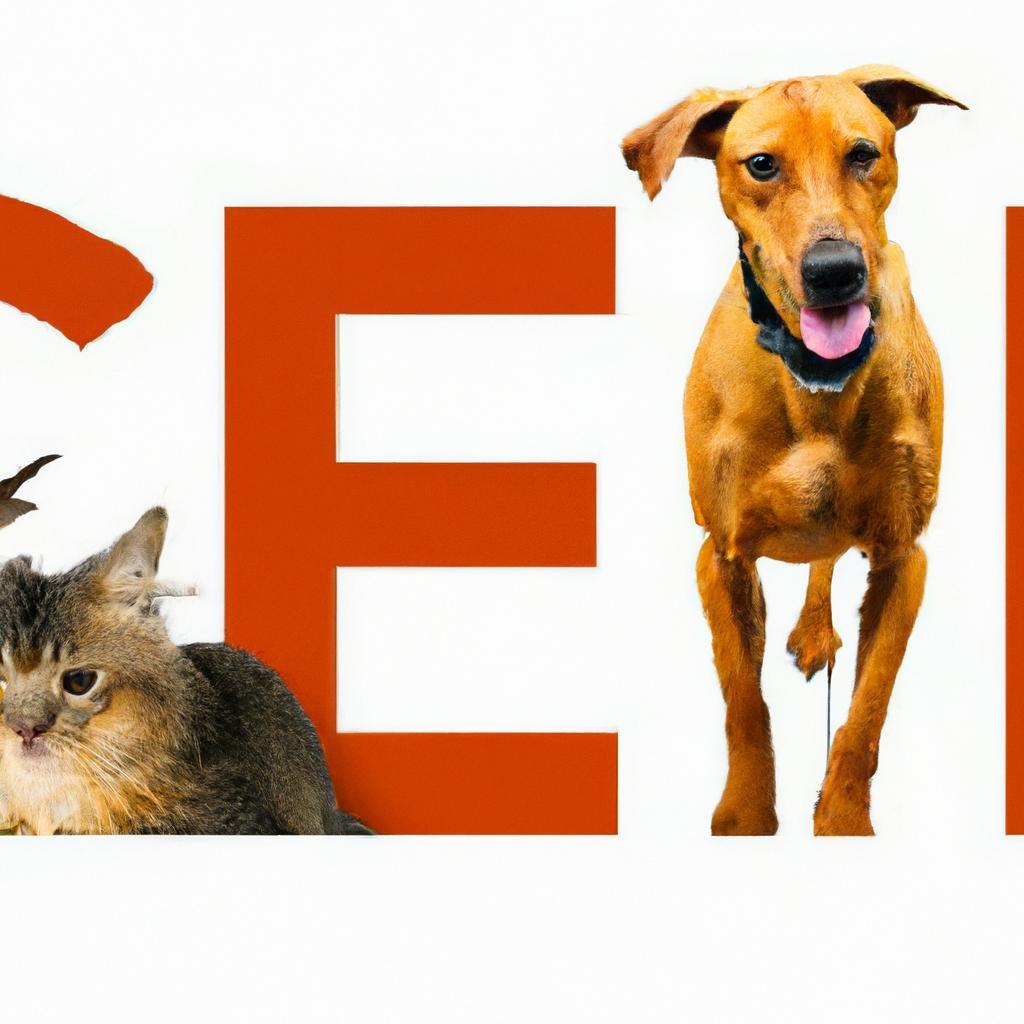As I sat on the couch, my golden retriever, Max, rested his head on my lap. I whispered, “I love you, buddy.” To my surprise, his tail wagged furiously, and he looked up at me with those soulful eyes. It made me wonder: does he truly understand? Research shows that dogs can recognize human emotions and tone, responding to our words with instinctual affection. So, while he may not grasp the exact phrase, Max undoubtedly feels the love behind it. Every “I love you” strengthens our bond, proving that communication transcends words.
Contents
- Understanding Canine Communication and Emotional Perception
- The Science Behind Dogs and Human Language Comprehension
- Building a Stronger Bond Through Positive Reinforcement
- Practical Tips for Expressing Love to Your Dog Effectively
- Q&A
Understanding Canine Communication and Emotional Perception
Dogs are remarkable creatures, capable of forming deep emotional bonds with their human companions. While they may not understand the exact words we say, they are highly attuned to our tone of voice, body language, and facial expressions. When you express affection through phrases like “I love you,” your dog picks up on the emotional cues behind your words. This connection is rooted in their ability to perceive human emotions, making them sensitive to the feelings we convey.
Research has shown that dogs can differentiate between various human vocal tones. They respond positively to high-pitched, cheerful voices, which often accompany expressions of love and affection. This means that while your dog might not grasp the meaning of “I love you,” they certainly recognize the warmth and positivity in your tone. This emotional resonance fosters a sense of security and happiness in your furry friend, reinforcing the bond you share.
Moreover, dogs are experts at reading body language. They observe your posture, gestures, and even your eye contact to gauge your emotional state. When you lean down to your dog, smile, or offer gentle touches, you communicate love and affection in a language they instinctively understand. This non-verbal communication is crucial in helping dogs interpret our feelings, allowing them to respond with their own displays of affection, such as wagging tails, playful barks, or cuddling up to you.
In essence, the relationship between humans and dogs is built on a complex interplay of emotional perception and communication. While your dog may not comprehend the specific words you use, they certainly feel the love behind them. By nurturing this connection through consistent positive interactions, you can enhance your dog’s emotional well-being and strengthen the bond you share, creating a harmonious partnership that transcends language.
The Science Behind Dogs and Human Language Comprehension
Recent studies have illuminated the fascinating relationship between dogs and human language comprehension, revealing that our canine companions are more attuned to our words than we might think. Research indicates that dogs possess an impressive ability to understand human speech, often responding to specific commands and phrases with remarkable accuracy. This understanding goes beyond mere association; dogs can differentiate between various tones and emotional cues in our voices, allowing them to gauge our feelings and intentions.
One of the key factors contributing to this ability is the dog’s remarkable sense of hearing. Dogs can detect sounds at frequencies that are inaudible to humans, enabling them to pick up on subtle vocal nuances. This heightened auditory perception allows them to recognize familiar words and phrases, such as “walk,” “treat,” or even “I love you.” When we express affection through our tone and body language, dogs are adept at interpreting these signals, reinforcing their understanding of our verbal expressions.
Moreover, the bond between humans and dogs has evolved over thousands of years, leading to a unique form of communication. Dogs are not only responsive to our words but also to our non-verbal cues, such as gestures and facial expressions. This combination of verbal and non-verbal communication creates a rich tapestry of understanding, allowing dogs to respond appropriately to our emotional states. For instance, when we say “I love you” with warmth and affection, our dogs often mirror that sentiment through their behavior, showcasing their ability to comprehend the emotional weight behind our words.
In essence, while your dog may not grasp the full complexity of the phrase “I love you,” they certainly understand the affection and care it conveys. By recognizing the tone of your voice and the warmth of your demeanor, dogs can respond with their own expressions of love and loyalty. This profound connection highlights the incredible bond we share with our furry friends, suggesting that, indeed, they do know what we are saying—at least in their own special way.
Building a Stronger Bond Through Positive Reinforcement
When we express our affection to our dogs, whether through words or actions, we are engaging in a powerful form of communication that transcends language. Dogs are incredibly perceptive creatures, capable of picking up on our emotions and intentions. By using positive reinforcement, we can strengthen our bond with them, making our expressions of love more meaningful. This approach not only enhances their understanding of our feelings but also encourages them to respond positively to our affection.
Positive reinforcement involves rewarding desired behaviors with praise, treats, or affection, creating a cycle of encouragement and trust. When you tell your dog “I love you,” pairing those words with a gentle touch or a tasty treat can help them associate your verbal expression with positive experiences. This method fosters a deeper connection, as your dog learns to recognize the significance of your words through the context in which they are delivered. Over time, your dog may not only respond to your tone but also begin to understand the emotional weight behind your declarations of love.
Moreover, consistency is key in reinforcing this bond. Regularly expressing your affection through positive interactions—such as playtime, training sessions, or simply cuddling—can help solidify your dog’s understanding of your feelings. By establishing a routine that includes verbal affirmations and physical affection, you create a safe environment where your dog feels loved and valued. This consistency not only enhances their emotional well-being but also encourages them to reciprocate your affection in their own unique ways.
Ultimately, the relationship between you and your dog is built on mutual understanding and trust. By utilizing positive reinforcement, you are not just teaching your dog to respond to your words; you are cultivating a deeper emotional connection that enriches both your lives. As your dog learns to recognize and respond to your expressions of love, you will find that your bond grows stronger, leading to a more fulfilling and harmonious companionship.
Practical Tips for Expressing Love to Your Dog Effectively
When it comes to showing affection to your furry friend, actions often speak louder than words. Dogs are incredibly perceptive and can pick up on your emotions through your body language and tone of voice. To effectively express your love, consider incorporating the following gestures into your daily routine:
- Physical Touch: Regularly petting, cuddling, or giving belly rubs can create a strong bond. Dogs thrive on physical affection, and these moments can be incredibly reassuring for them.
- Quality Time: Spend dedicated time with your dog, whether it’s going for a walk, playing fetch, or simply lounging together. This not only reinforces your connection but also shows your dog that they are a priority in your life.
- Positive Reinforcement: Use treats and praise to reward your dog for good behavior. This not only communicates your love but also encourages them to repeat those behaviors, strengthening your relationship.
- Engaging Activities: Participate in activities that stimulate your dog mentally and physically, such as agility training or puzzle toys. These experiences can enhance your bond and show your dog that you care about their happiness and well-being.
Vocal cues also play a significant role in how dogs interpret your feelings. While they may not understand the words “I love you,” they can certainly recognize the tone and inflection in your voice. To convey your affection verbally, try the following approaches:
- Use a Soft Tone: Speak to your dog in a gentle, soothing voice. This can create a sense of comfort and security, making them feel loved and cherished.
- Consistent Commands: Use consistent, positive commands that your dog associates with praise and affection. This reinforces your bond and helps them understand that you are communicating with love.
- Playful Sounds: Incorporate playful sounds or silly phrases when interacting with your dog. This can elicit excitement and joy, further enhancing your connection.
Lastly, remember that every dog is unique, and their preferences for receiving love may vary. Pay attention to your dog’s reactions and adjust your approach accordingly. Some dogs may prefer more physical affection, while others might thrive on verbal praise or interactive play. To ensure your expressions of love are effective, consider the following:
- Observe Body Language: Watch for signs of comfort and happiness, such as wagging tails or relaxed body posture. These cues can guide you in understanding what your dog enjoys most.
- Be Patient: Building a strong bond takes time. Be patient and consistent in your efforts to express love, and your dog will respond in kind.
- Tailor Your Approach: Experiment with different methods of affection to see what resonates best with your dog. This personalized approach can deepen your connection and enhance their overall well-being.
Q&A
-
Do dogs understand human language?
While dogs may not comprehend every word we say, they are highly skilled at picking up on tone, body language, and context. This means that when you say “I love you” in a warm and affectionate tone, your dog can sense your emotions and respond accordingly.
-
Can dogs recognize the phrase “I love you”?
Yes, dogs can learn to associate specific phrases with certain actions or feelings. If you consistently use the phrase “I love you” while showing affection, your dog may begin to recognize it as a sign of love and comfort.
-
How do dogs respond to expressions of love?
Dogs often respond to expressions of love through their behavior. They may wag their tails, seek physical closeness, or exhibit playful behavior when they feel loved. These responses indicate that they understand and reciprocate your affection.
-
Is it important to express love to my dog?
Absolutely! Regularly expressing love and affection strengthens the bond between you and your dog. It fosters trust and security, making your dog feel valued and happy, which is essential for their overall well-being.
while dogs may not grasp the exact words we say, their ability to read our emotions and body language suggests they understand our love. Strengthening this bond through affection and communication enriches their lives and ours.

大家好,我是彼得潘,專業的手法身體治療師。我喜歡探索和研究各種主題,並透過與人工智慧的合作分享專業、實用、有趣的文章。我們定期進行人工審核,以確保內容的準確性。如果您發現文章中有任何不準確的地方,請隨時與我們聯繫,我們會及時糾正。您可以透過 [email protected] 與我們聯繫。



